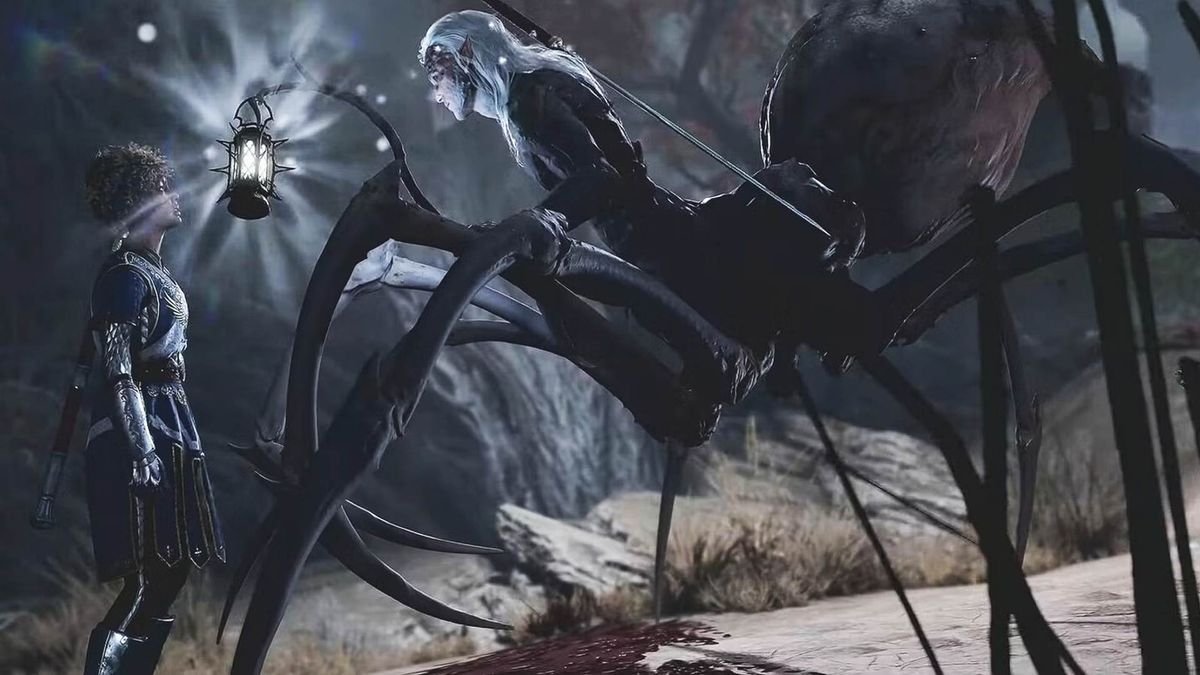Right now in the games industry, everyone is looking for the next big thing, but no one really knows what it’ll be. Microsoft has completely dismantled the traditional console business model, by making all its first-party games cross-compatible with PC, and ensuring instant availability on the Game Pass streaming service. The rise of the Battle Royale genre, together with the mass popularisation of Twitch streaming has given rise to entertainment experiences which cross borders between different machines, and between interactive and viewed entertainment.
Is Fortnite a game or a playground or a concert venue or a TV set? When do open world games end? Do they ever, really? Outside of the console business, Apple and Google are both experimenting with subscription-based games services, while Chinese mega-corps are leading tens of millions of smartphone owners into an era of ‘play to earn’ games, augmented with crypto currency, blockchain and NFT elements – as western publishers such as Electronic Arts look on with dollar signs flashing in their eyes.
Cut to Silicon Valley. Facebook and its countless satellite industries, techbro rivals, and wannabe start-ups are now obsessed with the concept of the metaverse, in which discrete gaming and viewing experiences dissolve into all-encompassing, platform-agnostic, globe-spanning virtual worlds – part Fortnite, part Second Life, part Ready Player One.
All of these potential futures for the games industry are currently viable, maybe they’ll coexist. Nobody knows. But the very concept of a video game has become malleable and uncertain, the old structures and conventions are collapsing. It’s no coincidence that there are so many games around at the moment about time-loops: developers themselves are beginning to question the meaning and structure of games as we’ve known them for several decades. All the old certainties are fading. It’s like Hollywood at the dawn of the synchronised sound era – years of established conventions just collapsed and new genres and entertainment formats exploded.
We’ve been here before, sort of…

Is this period of uncertainty unprecedented? No. What we’re going through now – this giant existential crisis over what games are and what they are becoming – is not new for the games industry. It’s happened before. In 1993, a number of new technologies converged to completely disrupt the games business.
For the previous 15 years, the industry had been divided between the home computer manufacturers, the console builders, and the power players. The likes of Atari, Commodore, Nintendo, and Sega had been around for the entirety of the modern industry, subdividing the industry among themselves in a controlled series of product rivalries. But the 1990s saw two major disruptive new technologies: the CD-Rom and mass public access to the internet. CD-Roms offered huge amounts of storage space and for the first time allowed developers to think about adding real video and audio to interactive experiences.
For a while in the early 1990s, it seemed that this may lead to a new, highly cinematic form of game, freed from the “non-realism” of chunky graphics, and therefore more attractive to a wider audience. The result was the FMV or ‘interactive movie’ genre – titles such as Night Trap, 7th Guest and Voyeur, which combined the conventions of cinema and game design in a new form of combined entertainment. We look back on that period as something of a joke, a dead end, but it sure didn’t feel like it at the time. There was a huge amount of interest from TV and movie production companies, with Warner, Fox, and Disney all setting up interactive entertainment divisions and the makers of action flicks such as Demolition Man and Johnny Mnemonic taking time to film extra content to be used in tie-in interactive movies games.

The CD-Rom era also brought new machines and new players into the console business. Electronics giant Philips attempted to kickstart the multimedia phenomenon with its CDi machine, EA founder Trip Hawkins debuted the 3DO, Commodore launched the Amiga 32 – all had different angles on what a CD console should be. And it has slipped into legend how Sony’s initial entry into the games business was via a canceled CD-Rom add-on for the SNES.
The announcement of the PlayStation in October 1993 opened up another potential future for the games industry: real-time 3D visuals. With its dedicated 32bit graphics processing unit and Geometry Transformation Engine co-processor, the machine was custom designed to draw and manipulate textured polygons in a way no mainstream games machine had been before. Sony – through the vision of its chief engineer Ken Kuturagi – saw a new demographic of 20-something players who would be seduced by the techno-futurism of 3D graphics combine with CD-quality sound. The future it saw was more aligned with the dynamics of anime, pop culture, and computer generated imagery than it was with the traditional movie industry. A new battlefront opened up.
Widening the scope of play

The PlayStation era also provided a huge disruption to the conventional relationship between the arcade and the home console. In the past, the best games came out as coin-ops first and then inferior versions turned up on home machines a year or so later. With the PlayStation, Sega Saturn, and Neo Geo however, the games were coming across almost immediately – developed by the same teams and involving only subtle descaling of advanced visual effects and poly counts. Titles such as Tekken, Sega Rally, and Daytona USA slipped imperceptibly between home and arcade platforms, the two businesses now effectively marketing each other. To further muddy the status quo, Namco’s System 11 and Sega’s ST-V arcade boards were both based on home console hardware – the former on PlayStation, the latter Saturn – this reversed the usual technology route and made possible a new generation of cheap, experimental arcade experiences.
Cross to the home computer business, and the situation was similarly unstable. After years on the periphery, the IBM PC was coming into its own as a games platform in the early-to-mid 1990s, thanks to the 386 and then 486 processors, cheap CD drives, improved sound cards and the arrival of 3D graphics accelerator cards. Alongside it came the growth of LAN and online gaming, stimulated by CERN’s release of the WWW software into the public domain in April 1993. Suddenly, players had access to a global community of fellow participants, with titles such as Air Warrior and Shadow of Yserbius introducing a generation to graphical multiplayer entertainment.
“What 1993 tells us about 2023 is that there won’t be a winner – there won’t be a single route out of the current chaos”
In effect, the tumultuous changes hitting the industry in 1993 weren’t that different to what we’re seeing now: it was about traditional markets waning, about disruptive new technologies widening the scope of gaming experiences, and about gamers themselves altering their own relationships with games and what they want from them. And what 1993 tells us about 2023 is that there won’t be a winner – there won’t be a single route out of the current chaos. The future isn’t about blockchain games or multiverse games or games streamed over the cloud. These aspects will all be combined, they’ll evolve and they’ll be utilised by creative people in ways that Mark Zuckerberg or Bobby Kotick or the Tencent management board will never see coming.
What 1993 told us is that the future of games hardly ever comes from the top and it is never evenly distributed – it comes from everywhere at once, it comes from developers in garages in Texas and studios in Liverpool and workshops in Shibuya or Zhongguancun, and usually you don’t see it until it’s too late and you’re already playing.
As the new generation consoles celebrate their one year anniversary, here are five moments that defined the PS5 and five moments that defined the Xbox Series X.
 Games News games, movies and TV you love.
Games News games, movies and TV you love.



